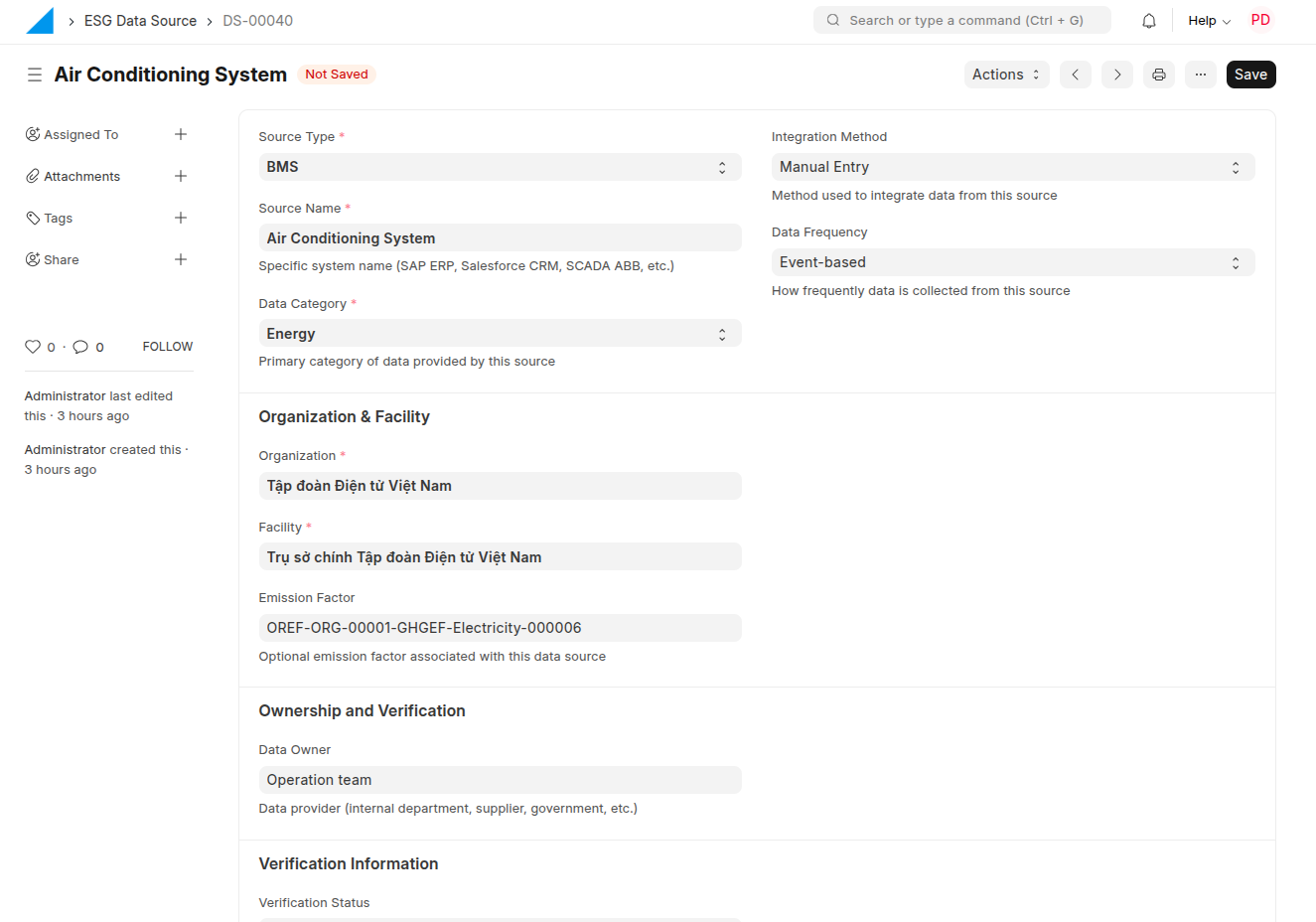Data Source
This section provides a complete guide to managing data sources in your ESG Environment Management System, based on the ESG Data Source doctype.
What is an ESG Data Source?
An ESG Data Source represents any system, device, or process that provides data for ESG reporting (e.g., BMS, IoT, ERP, manual entry, etc.).
ESG Data Source Fields
When creating or editing a data source, you will need to provide the following information:
- Source Type: Type of system (ERP, CRM, SCADA, IoT, BMS, Sensors, Supply Chain, Regulatory Agency, Auditors) (required)
- Source Name: Specific name of the system or device (e.g., "Air Conditioning System") (required)
- Data Category: Main category of data (Energy, Emissions, Water, Waste, etc.) (required)
- Integration Method: How data is integrated (Manual Entry, CSV Import, Real-time IoT, Batch Processing, API)
- Data Frequency: How often data is collected (Event-based, Hourly, Daily)
- Organization: The organization this data source belongs to (required)
- Facility: The facility where this data source is located (required)
- Emission Factor: (Optional) Link to an approved emission factor for this data source
- Data Owner: Department, supplier, or entity responsible for the data
- Verification Status: Unverified, Pending, or Verified
- Verification Method: How the data is verified (ISO 14001, GRI Standards, Third-party Audit, etc.)
- Data Uncertainty (%): Estimated uncertainty in the data
- Notes: Additional information
- Attachment: Upload supporting documents or certificates
Steps to Add a New Data Source
- Go to ESG Data Source
- Click "Add New Data Source"
- Fill in the required fields as described above
- Link to the correct Organization and Facility
- (Optional) Link an Emission Factor for automatic GHG calculations
- Set Integration Method and Data Frequency according to your data collection process
- Assign a Data Owner and provide verification details if available
- Save the data source
Data Source Verification
- Set the Verification Status to "Verified" once the data source has been reviewed and approved
- Record the Verification Method and any supporting documentation
- Verified data sources improve the reliability of ESG reporting
Best Practices
- Use clear and descriptive names for each data source
- Regularly review and update data source information
- Assign responsible data owners for accountability
- Link emission factors for automated GHG calculations
- Attach supporting documents for audit and compliance
- Periodically verify data sources and update their status
Example

This example shows a manually entered BMS data source for an air conditioning system, linked to an organization, facility, and emission factor, with verification and ownership details.